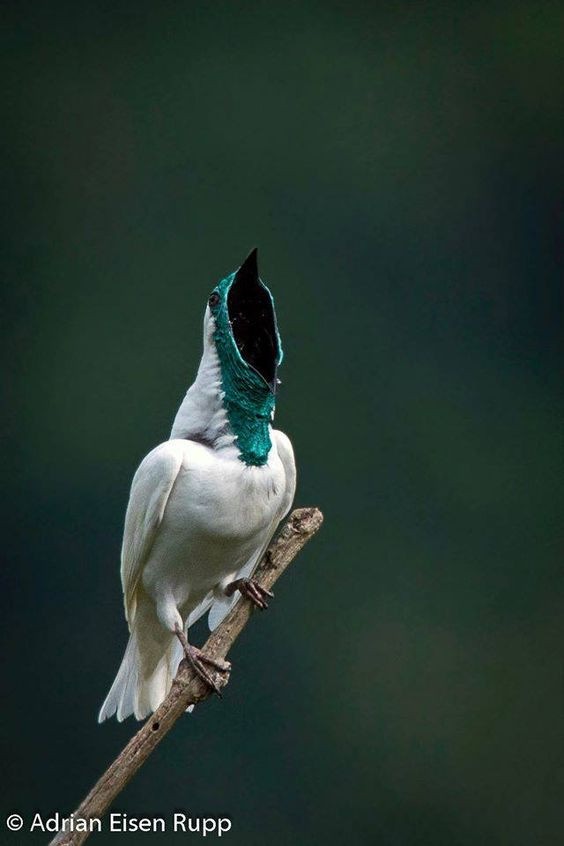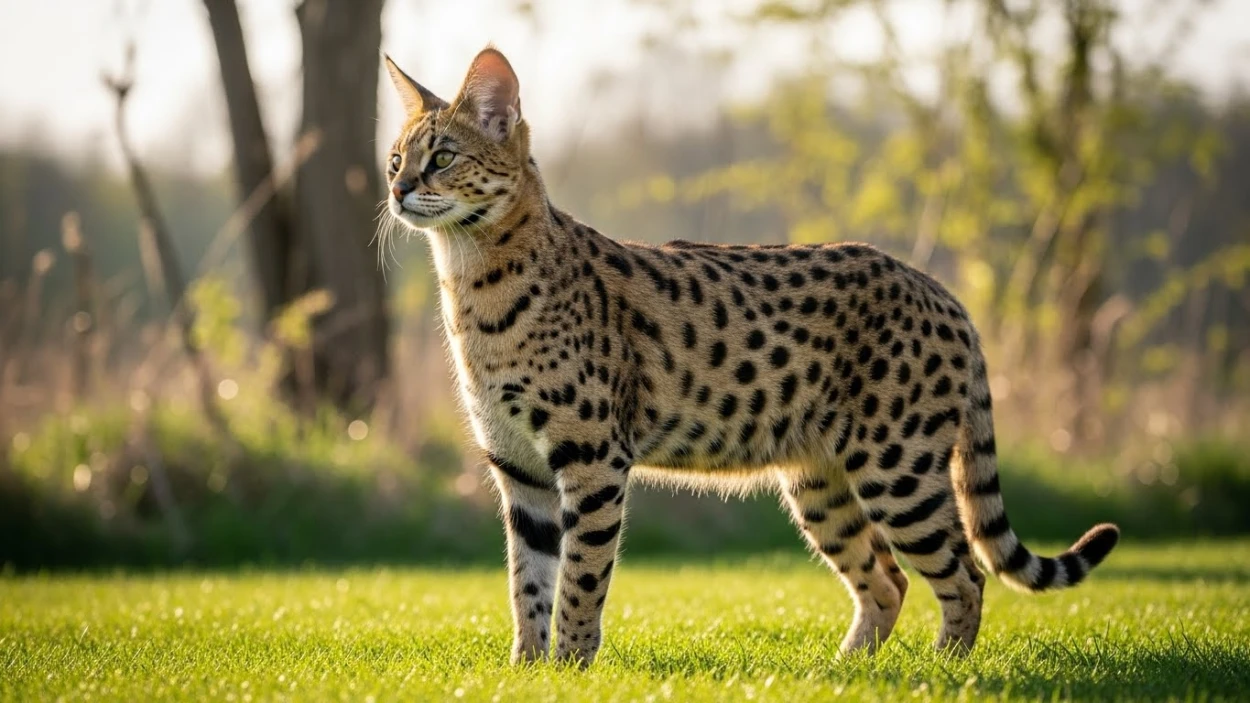A Magnificent Melodist of the Rainforest:
In the lush rainforests of Central and South America, a remarkable avian artist captures the attention of all who hear their call. Introducing the Bare-throated Bellbird (Porcinis nidicolous), a striking species that stands out not only for its vibrant appearance but also for its enchanting vocalizations. This charismatic bird is a true icon of the neotropical rainforest, captivating both scientists and nature enthusiasts alike.

The Bare-throated Bellbird, also known as the Bare-necked Bellbird or the Bellbird of Antioquia, is a medium-sized passerine bird that belongs to the Cotingid family. It inhabits the cloud forests and montane forests of countries such as Colombia, Ecuador, Venezuela, and Brazil. With its distinctively colored plumage, the male bellbird is an eye-catching sight. Its body is predominantly black, adorned with contrasting white patches on the tail, wings, and forehead. However, the most striking feature of this bird is its bare, bright blue throat unique characteristic that sets it apart from its relatives.
While the Bare-throated Bellbird's appearance is undeniably captivating, its true claim to fame lies in its extraordinary vocal abilities. The male bellbird possesses a remarkable call that resonates throughout the rainforest, earning it the nickname "nature's loudest bird." The call, resembling a metallic ping followed by a piercing, pure tone, can be heard from several kilometers away. It is one of the most distinctive and complex vocalizations in the avian world.
During the breeding season, male Bare-throated Bellbirds perch prominently on tall branches, positioning themselves to project their calls over vast distances. They elevate their bodies, inflate their throats, and let out a series of resonating notes that echo through the forest canopy. These calls serve a dual purpose: attracting females and proclaiming territory. The melodious performance of the male bellbird is not only a testament to its courtship prowess but also a reflection of the pristine natural symphony of the rainforest.
The bell-like calls of the male Bellbirds are so loud that they have been measured at over 115 decibels, comparable to the noise produced by a chainsaw. The astonishing volume and resonance of their vocalizations are made possible by specialized vocal organs known as syrinxes. These syrinxes enable the birds to create a unique timbre and project their calls with incredible power, ensuring that their songs can be heard over the dense foliage and other competing sounds of the rainforest.
The female Bare-throated Bellbird, on the other hand, is comparatively drab in appearance, with a predominantly olive-green plumage that helps her blend into the surrounding vegetation. This cryptic coloration provides her with excellent camouflage while she tends to her nesting duties. Female bellbirds play a more understated role in the vocal symphony, producing soft chattering calls that help maintain contact with their mates.
Sadly, the Bare-throated Bellbird faces several conservation challenges. The loss and fragmentation of its natural habitat due to deforestation and agricultural expansion pose significant threats to the species. Furthermore, illegal trapping and hunting for the pet trade exacerbate its decline. Efforts are being made by conservation organizations and governments to protect the bird's habitat and enforce regulations against its capture. Public awareness and education campaigns aim to highlight the importance of preserving these magnificent creatures and their unique contributions to the rainforest ecosystem.
The Bare-throated Bellbird serves as a symbol of the vibrant biodiversity found within the neotropical rainforests. Its dazzling appearance and captivating vocalizations remind us of the intricate beauty and interconnectedness of the natural world. Protecting the habitats where these birds reside is crucial not only for their survival but also for the overall health of the rainforest ecosystem.
Conservation efforts are underway to safeguard the Bare-throated Bellbird and its habitat. Establishing protected areas and national parks helps provide safe havens for these birds to breed, forage, and nest. Additionally, initiatives that promote sustainable land use practices, such as reforestation and agroforestry, contribute to the preservation of the rainforest while supporting local communities.
Scientific research plays a vital role in understanding the behavior, ecology, and conservation needs of the Bare-throated Bellbird. Studying their vocalizations and habitat preferences helps identify crucial areas for protection and informs conservation strategies. By combining field observations, acoustic monitoring, and genetic studies, scientists can gather valuable information to guide conservation actions and raise awareness about the importance of preserving these unique species.
Furthermore, ecotourism has the potential to benefit both local communities and the conservation of the Bare-throated Bellbird. Responsible ecotourism practices can generate income for local residents while offering visitors an opportunity to appreciate the beauty of these birds and their fragile habitat. When done sustainably and with a focus on minimizing disturbance, ecotourism can create incentives for conservation and foster a sense of stewardship among visitors.
The Bare-throated Bellbird reminds us of the incredible wonders that lie within our rainforests, serving as an ambassador for the myriad species that depend on these ecosystems. Its mesmerizing call and vibrant appearance inspire awe and curiosity, inviting us to delve deeper into the complexities of nature. By working together to protect these precious habitats and the creatures that inhabit them, we can ensure that future generations have the privilege of experiencing the enchanting presence of the Bare-throated Bellbird and the rich biodiversity of our planet's rainforests.
No, the Bare-throated Bellbird does not smoke. Birds, including the Bare-throated Bellbird, do not possess the physical or behavioral capability to smoke or engage in any form of smoking. The idea of a bird smoking is purely fictional and not based on any factual information about bird behavior or biology. Birds rely on their natural behaviors, such as foraging, breeding, and vocalizing, to survive and thrive in their respective habitats.

But you must be wondering, why are they smoking in some viral videos and images? Although the reason for the smoking is not specifically stated anywhere, it may be interesting to know that these birds whistle in metallic and explosive sounds. During the moist season, they deliver it from atop moist forests' canopy. Smoke is nothing more than vapor.












